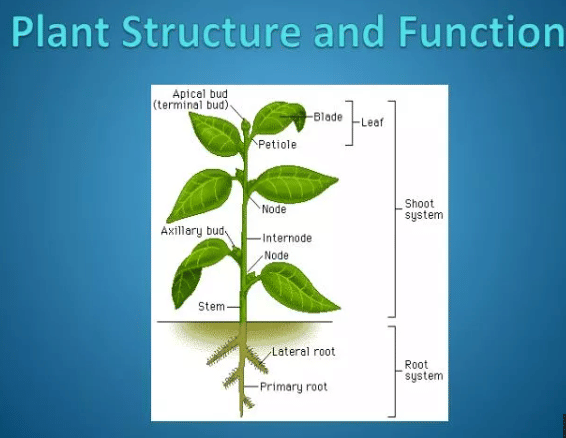Year 3 Exam > Year 3 Notes > Year 3 Science > The structure of plants
The structure of plants | Year 3 Science PDF Download
Plants: Their Structure and Functions
- Importance of Plants: Plants play a crucial role in our ecosystem by providing food for animals and releasing oxygen into the atmosphere.
- Key Parts of Plants:
- Roots: Roots absorb water and nutrients from the soil, anchoring the plant in place.
- Leaves: Leaves perform photosynthesis, using sunlight, carbon dioxide, and water to create food for the plant.
- Stem: The stem transports water and nutrients to different parts of the plant.
- Flowers: Flowers are vital for plant reproduction and seed production.

The Parts of a Plant and Their Functions
All plant parts have specialized functions that contribute to the plant's overall health and vitality.

Question for The structure of plantsTry yourself: Which part of the plant is responsible for absorbing water and nutrients from the soil?View Solution
The document The structure of plants | Year 3 Science is a part of the Year 3 Course Year 3 Science.
All you need of Year 3 at this link: Year 3
|
20 videos|23 docs|5 tests
|
FAQs on The structure of plants - Year 3 Science
| 1. What is the structure of plants? |  |
Ans. Plants have a hierarchical structure consisting of roots, stems, leaves, flowers, and fruits. Roots anchor the plant and absorb water and nutrients from the soil. Stems provide support and transport nutrients throughout the plant. Leaves are the primary site of photosynthesis, where plants make their food. Flowers are reproductive structures that produce seeds, and fruits protect and disperse the seeds.
| 2. How do roots contribute to the structure of plants? |  |
Ans. Roots play a crucial role in the structure of plants by anchoring them in the soil and absorbing water and nutrients. They also store food reserves and provide support for the plant. The root system of a plant can vary in size and complexity depending on the species and environmental conditions.
| 3. What is the function of stems in plants? |  |
Ans. Stems serve multiple functions in plants, including providing support for the plant, transporting water, nutrients, and food throughout the plant, and serving as a site for photosynthesis in some species. Stems also play a role in the reproduction of plants by producing flowers and fruits.
| 4. How do leaves contribute to the structure of plants? |  |
Ans. Leaves are essential structures in plants as they are the primary site of photosynthesis, where plants convert sunlight into energy. They also play a role in transpiration, where water is released from the plant through tiny pores called stomata. Leaves come in various shapes and sizes, each adapted to the plant's environment and needs.
| 5. Why are flowers and fruits important in the structure of plants? |  |
Ans. Flowers are reproductive structures in plants that produce seeds through pollination. Fruits protect and disperse these seeds, ensuring the continuation of the plant species. Flowers and fruits are essential for the survival and reproduction of plants, contributing to their overall structure and diversity.

|
Explore Courses for Year 3 exam
|

|
Signup for Free!
Signup to see your scores go up within 7 days! Learn & Practice with 1000+ FREE Notes, Videos & Tests.
Related Searches

















